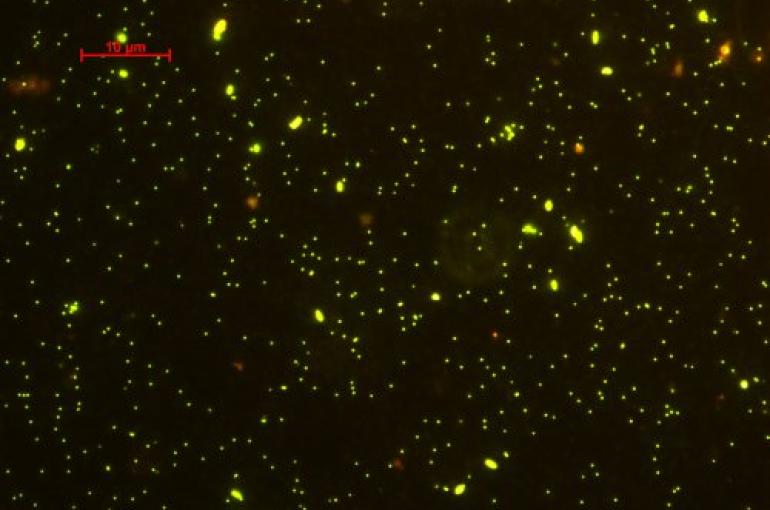In a search for new viruses in the oceans, scientists led by Ohio State University have discovered new bacteriophage types that may play important roles in the global nutrient cycles. These roles have thus far primarily been attributed to bacteria. The viruses were among thousands of newly identified viruses. Utrecht University bioinformatician Bas Dutilh identified the newcomers, which are described in an article published in Nature.
Tara Oceans
The researchers examined the DNA in 104 marine samples collected from deep and shallow waters in all of the world’s oceans. They collected the samples during an expedition as part of the Tara Oceans project, in which the sail-powered research vessel Tara travels the world to study climate change and biodiversity. The researchers were able to record the genetic structure of no fewer than 15,000 viruses in 867 genus-level clusters, tripling the number of known ocean viruses.
Sifting
Scientists have long known that a gigantic number of viruses circulate in the ocean, but only recently have technological and bioinformatical developments made it possible to study them accurately. That is where the expertise of Bas Dutilh’s research group came in. The group specialises in identifying individual viruses from large amounts of DNA collected from an ecosystem, in this case the ocean. These metagenomes, as they are called, contain the genetic information of all microorganisms and viruses mixed together. Dutilh has developed new methods for sifting and interpreting the information in these metagenomes.
Globetrotters
The study discovered that some viruses only occur in a specific location. Others are true globetrotters, and have spread to every ocean. The researchers were also able to determine the function of some viruses, which appeared to play important roles in the global cycles of nutrients including sulphur and nitrogen, roles that had previously only been assigned to bacteria. “The viruses influence the nutrient flows in part by doing what they are famous for, killing an estimated 40 percent of all marine bacteria every day”, explains Dutilh, who is also affiliated with the Radboud UMC in Nijmegen in addition to his appointment at Utrecht University. But some viruses also change the metabolism of the bacteria they infect, which in turn can drastically change their role in the nutrient flows. “Since we have now developed fairly decent methods for linking viruses to their host bacteria, we are slowly gaining a clearer image.”
“Dark matter”
Viruses are the great unknowns in the ecosystem of the biosphere, and are therefore sometimes called biological ‘dark matter’. The discovery that they influence the sulphur and nitrogen cycles opens new ways to look at the earth’s nutrient flows. These flows are important for the environment, in part due to their connection to climate change. Dutilh: “In future research models of the ecosystem, we will be able to assign a place to the viruses. That will provide a more complete picture.”
Publication
Ecogenomics and potential biogeochemical impacts of globally abundant ocean viruses.
Simon Roux, Jennifer R. Brum, Bas E. Dutilh*, Shinichi Sunagawa, Melissa B. Duhaime, Alexander Loy, et al.
Nature (2016) doi:10.1038/nature19366
*Affiliated with Utrecht University

